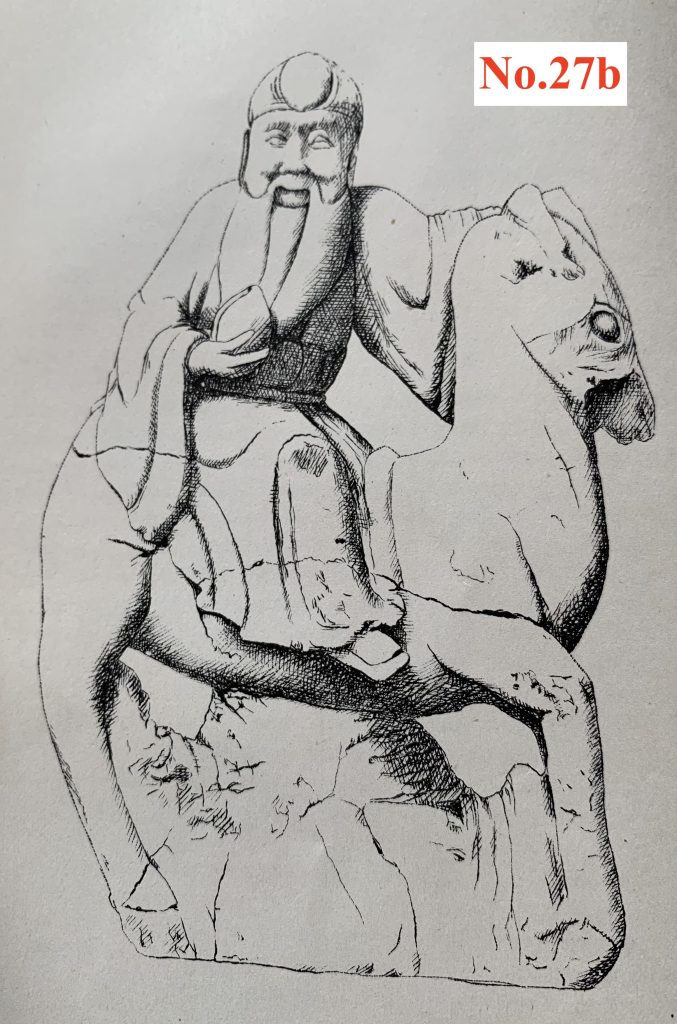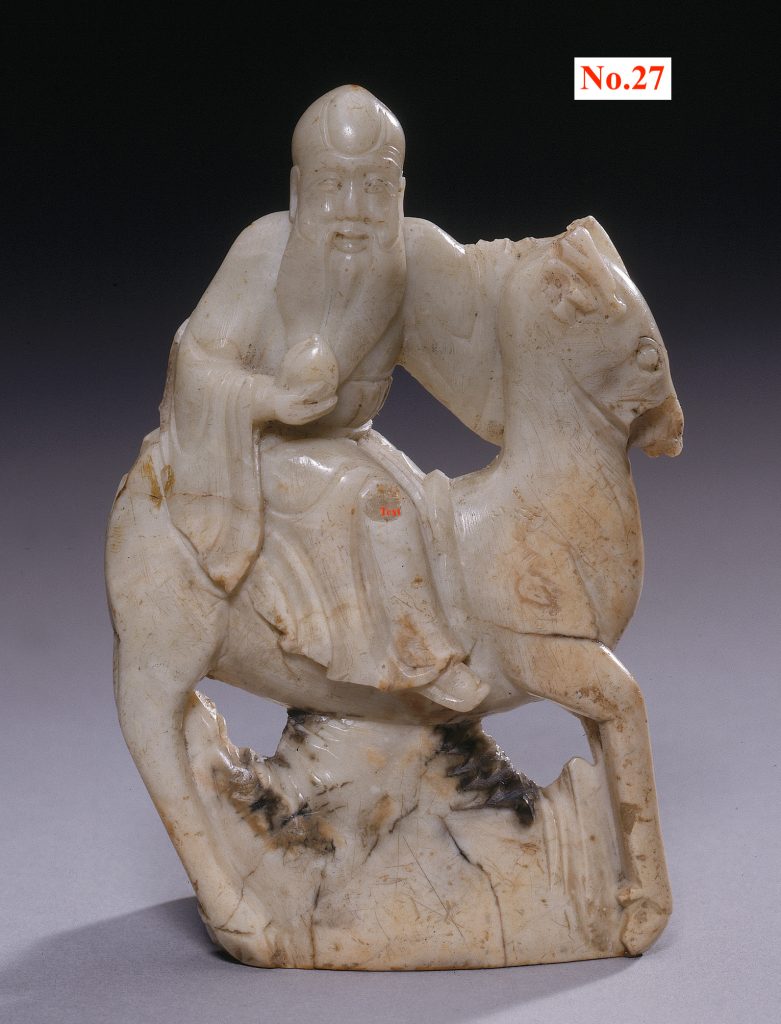In the Powerhouse Museum Sydney, is a figurine identified as Shou Lao (壽老) – the Chinese God of Longevity. Originally reported to have been found buried in the roots of a Banyan tree near Darwin, Northern Territory in 1879 it was not at the time or for many years after considered remarkable or even Chinese.[1] However it was immediately assumed to be evidence of non-European contact with the north of Australia. It was not until the 1960s that the idea arose that the figurine – now identified as Chinese – was much older than the 19th century and was perhaps from the Ming period (some said Tang), and that it must had been brought to Australia sometime in the 15th century. The most likely person to have done so being Zheng He (鄭和) himself or one of his crew.[2]

All this is speculative nonsense (it is even doubtful that C.P. Fitzgerald himself was serious). There is no reason to believe the figurine is older than the 19th century and was not simply brought by one of the many Chinese people in the northern territory at that time. Nevertheless the idea that people from China “must” have discovered Australia at some time in the distance past is one very attractive to many people and similar “proofs” also based on speculation and misinterpreted have often been repeated. These include the idea that a ship from Zheng He’s fleet was blown off course, despite all his ships being accounted for and their journeys clearly recorded.[3] Even more fanciful is the idea that astronomers of the 5th century BC in China travelled to northern Australia on the orders of Confucius no less in order to observe an eclipse. This last is based on an interpretation of two characters in the ancient Chinese classic the Spring and Autumn Annals, according to which the observation of an eclipse at that time could only have be performed from a location in Australia.[4]
Is there any basis for the idea that Chinese people “discovered” Australia and why is it important? The closest link with any basis in evidence is the trade in trepang carried on between northern Australia and some of the islands of Indonesia from perhaps the 18th century. The trepang was ultimately bound for the Chinese market and it is not beyond belief that one of the Chinese purchasers of the trepang did follow his supply line to view for himself where his product came from. In fact we do have one fascinating piece of historical evidence to heartened those wishing to lay claim to a Chinese discovery of Australia. The Dutch had colonised the islands of the now Indonesian archipelago including Timor and in their records of the 18th century is a report of a “Chinese trader” who returning from a trip to the south of “five days sailing before the wind and two days and nights having drifted” reported to have visited a land of people “very black and the hair woolly”. The Timor Resident believed this to have been the “mainland coast of the Southland”.[5] Thus far and no further can history go but for some this may be far enough.
So this leaves the question why is it important and why do some wish the Chinese discovery of Australia to be so even if based on the most fanciful of evidence? Like those of British origin in Australia who for long emphasised the “discovery” of Australia by the British Captain Cook over the many previous sightings and mappings of the Australian coast by the Dutch and others – not to mention discovery by Indigenous Australians – it is a matter of establishing a claim. People of Chinese heritage, like all Australians, wish to feel a sense of belonging that only Indigenous Australians can claim naturally and for some the idea of a Chinese discovery helps achieve this.[6]
See also No. 47 Chinese Gold Miners Memorial, Rookwood
[1] Thomas Worsnop, The prehistoric arts, manufactures, works, weapons, etc., of the aborigines of Australia, Adelaide: C.E. Bristow, Govt. Printer, 1897, pp.12-13.
[2] C.P. Fitzgerald, “The Chinese discovery of Australia?” in T. Inglis Mo (Ed), Australia writes: an anthology, Canberra Fellowship of Australian Writers: Melbourne, 1953, pp.75-86.
[3] For perhaps the earliest reference to Chinese discovery of Australia see Nepean Times, 15 December 1888, p.4 and for the first reference to Zheng He see Western Star and Roma Advertiser, 22 July 1939, p.1. [Thanks to Karen Schamberger for pointing out these two references.]
[4] Wei Chu-Hsien, The Chinese Discovery of Australia, Hong Kong, 1951.
[5] “Extract from a letter of the Resident of Timor, September 20, 1751” in Robert, Willem, The Dutch Explorations, of 1605-1756, of the North and Northwest Coast of Australia, Philo Press Amsterdam, 1973, pp.146-149.
[6] For a thorough examination of this question see, Frank Farrell, “Who discovered Australia?” in Themes in Australian History, (UNSW Press, 1990), pp.1-21.
For a switch on the “Chinese discovered Australia” myth see: The Bulletin Vol. 9 No. 0462 (22 Dec 1888), p.13, where this discovery is assumed but used to disparage the Chinese as leaving it to others (White folk) to do the “rough work” and only then come to Australia!
For more on the trepang trade see: Makassar centre of the trepang fishing


